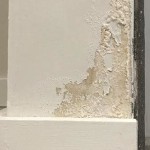Undermount Bathroom Sink Brackets: A Comprehensive Guide
Undermount bathroom sinks offer a sleek, modern aesthetic that many homeowners desire. They are installed beneath the countertop, creating a seamless look and simplifying cleaning. However, the very nature of their installation requires reliable support to prevent the sink from detaching and causing damage to both the sink and the surrounding countertop. This support is primarily provided by undermount bathroom sink brackets. This article explores the various aspects of these brackets, discussing their types, materials, selection criteria, installation methods, and maintenance considerations.
Undermount sink brackets serve a crucial function: they bear the weight of the sink and its contents, preventing undue stress on the adhesive or epoxy used to bond the sink to the countertop. Without proper support, the adhesive bond can weaken over time due to water exposure, vibrations, and the constant weight of the sink, leading to potential failure. Brackets redistribute the weight, ensuring a more secure and long-lasting installation.
Types of Undermount Bathroom Sink Brackets
The market offers a variety of undermount sink brackets, each designed to cater to different installation scenarios and weight requirements. Understanding the different types is essential for selecting the most suitable option for a specific bathroom sink and countertop configuration.
L-Shaped Brackets: These are among the most common and straightforward types of undermount sink brackets. They consist of a simple L-shaped piece of metal that attaches to the cabinet walls on one side and supports the underside of the sink flange on the other. L-shaped brackets are relatively easy to install and are suitable for lighter-weight sinks made of materials like porcelain or ceramic.
The size and thickness of L-shaped brackets can vary. It is crucial to choose brackets that are adequately sized and constructed from sufficiently strong material to handle the anticipated weight load. Considerations should be given to the depth of the sink and the thickness of the countertop material. Longer L-shaped brackets provide greater support for deeper sinks.
T-Shaped Brackets: T-shaped brackets offer a more robust support system compared to L-shaped brackets. They feature a horizontal arm that supports the sink flange and a vertical piece that extends towards the cabinet floor, providing added stability. T-shaped brackets are often preferred for heavier sinks made of materials like cast iron or stone.
The advantage of T-shaped brackets lies in their ability to distribute the weight more evenly, reducing stress on the cabinet walls. They are particularly useful when the cabinet walls are not particularly strong or when the sink is exceptionally heavy. Proper installation of T-shaped brackets typically involves securing the vertical piece to the cabinet floor or a sturdy brace within the cabinet.
Adjustable Brackets: Adjustable brackets are designed to accommodate variations in sink dimensions and countertop thickness. They typically feature telescoping arms or adjustable height settings, allowing for precise positioning and support. These brackets are especially useful in situations where the sink is not perfectly level or where the cabinet dimensions are slightly irregular.
Adjustable brackets offer flexibility and ease of installation, particularly for DIY projects. However, it is important to ensure that the adjustment mechanisms are securely locked in place after installation to prevent slippage or movement over time. Regularly inspecting the adjustment points is also advisable.
Sink Mounting Plates: Sink mounting plates offer a different approach to supporting undermount sinks. These plates are typically made of metal or composite materials and are attached directly to the underside of the countertop using epoxy or adhesive. The sink is then attached to the plate, providing a secure and stable connection.
Sink mounting plates distribute the weight of the sink across a larger surface area of the countertop, reducing stress on the immediate area around the sink opening. They are often used in conjunction with other types of brackets for added support, particularly for heavier sinks or countertops made of porous materials.
Custom Fabricated Brackets: In some cases, prefabricated brackets may not be suitable for a specific installation. Custom fabricated brackets can be designed and manufactured to meet unique requirements, such as unusual sink shapes, countertop configurations, or weight capacities. These brackets are typically made by professional fabricators and require precise measurements and specifications.
Custom fabricated brackets offer the highest level of customization and support, but they are also the most expensive option. They are typically reserved for high-end installations or situations where other types of brackets are not feasible.
Materials Used in Undermount Sink Brackets
The material used to construct undermount sink brackets significantly impacts their strength, durability, and resistance to corrosion. The choice of material should be carefully considered based on the weight of the sink, the environment in the bathroom, and the desired aesthetic.
Steel: Steel is a commonly used material for undermount sink brackets due to its high strength and load-bearing capacity. Steel brackets are typically coated with a protective finish, such as powder coating or galvanization, to prevent corrosion and rust. Stainless steel offers superior corrosion resistance compared to regular steel.
Steel brackets are suitable for supporting heavy sinks and are relatively inexpensive. However, they can be susceptible to corrosion in humid environments if the protective coating is damaged. Regular inspection and maintenance are recommended to prevent rust formation.
Stainless Steel: Stainless steel is a premium material known for its excellent corrosion resistance, durability, and aesthetic appeal. Stainless steel brackets are ideal for bathrooms with high humidity levels or where there is a risk of water exposure. They are also a good choice for modern bathroom designs, as they offer a sleek and polished look.
Stainless steel brackets are more expensive than steel brackets, but their longevity and resistance to corrosion make them a worthwhile investment. They require minimal maintenance and are less likely to develop rust or other forms of degradation.
Aluminum: Aluminum is a lightweight material that is corrosion-resistant and easy to work with. Aluminum brackets are often used for lighter-weight sinks made of materials like porcelain or ceramic. They are also a good choice for installations where weight is a concern, such as in mobile homes or recreational vehicles.
Aluminum brackets are less strong than steel or stainless steel brackets, so they are not suitable for supporting heavy sinks. They can also be susceptible to bending or deformation if subjected to excessive weight or stress. However, they offer a good balance of strength, weight, and corrosion resistance for certain applications.
Plastic or Composite Materials: Some undermount sink brackets are made of high-strength plastic or composite materials. These brackets are lightweight, corrosion-resistant, and relatively inexpensive. They are often used for lighter-weight sinks or in situations where metal brackets are not desired.
Plastic or composite brackets may not be as strong or durable as metal brackets, so it is important to choose brackets that are specifically designed for the weight and dimensions of the sink. They are also more susceptible to damage from heat or chemicals. Careful selection and installation are crucial for ensuring their long-term performance.
Key Considerations for Selecting Undermount Sink Brackets
Choosing the right undermount sink brackets involves several factors, including the weight of the sink, the type of countertop, the cabinet construction, and the desired aesthetic. Careful consideration of these factors will help ensure a secure and long-lasting installation.
Weight Capacity: The most critical factor in selecting undermount sink brackets is the weight capacity. The brackets must be able to support the weight of the sink when it is empty and when it is filled with water. It is advisable to choose brackets with a weight capacity that exceeds the actual weight of the sink by a significant margin to provide a margin of safety.
The weight capacity of the brackets is typically specified by the manufacturer. It is important to verify that the specified weight capacity is adequate for the intended application. If in doubt, it is always better to err on the side of caution and choose stronger brackets.
Countertop Material: The type of countertop material also influences the choice of undermount sink brackets. Solid surface countertops like granite or quartz are relatively strong and can support heavier sinks. Laminate or wood countertops are less strong and may require additional support.
For countertops made of porous materials, such as wood or some types of stone, it is important to seal the edges of the sink opening to prevent water damage. Sink mounting plates can also be used to distribute the weight of the sink and reduce stress on the countertop material.
Cabinet Construction: The construction of the cabinet is another important factor to consider. Cabinets with sturdy walls and a solid floor can provide more support for the sink than cabinets with flimsy walls or a weak floor. If the cabinet is not particularly strong, it may be necessary to reinforce it with additional bracing or supports.
When installing undermount sink brackets, it is important to ensure that the screws or bolts are securely anchored to the cabinet walls or floor. Using appropriate anchors or fasteners for the type of material is essential for preventing the brackets from pulling loose over time.
Ease of Installation: The ease of installation is a practical consideration, especially for DIY projects. Some types of undermount sink brackets are easier to install than others. Adjustable brackets, for example, offer greater flexibility and ease of positioning.
It is important to read the manufacturer's instructions carefully before installing undermount sink brackets. If you are not comfortable with the installation process, it is best to hire a professional to avoid damaging the sink, the countertop, or the cabinet.
Aesthetic Considerations: While functionality is the primary concern, the aesthetic appearance of the undermount sink brackets may also be a factor. Some brackets are designed to be concealed from view, while others are visible. The choice depends on the desired look and the overall design of the bathroom.
Stainless steel brackets, for example, can add a modern and stylish touch to a bathroom. Powder-coated brackets can be matched to the color of the cabinet or the sink for a more cohesive look. Concealed brackets provide a clean and seamless appearance.

Premium Sink Clips 10 Pack Kit Undermount Brackets Bathroom Kitchen Clip Heavy Duty Com

Undermount Sink Mounting Installation Clips U Bracket

Undermount Sink Clips Brackets 10 Pack Kit Kitchen Bathroom Supports Com

Premium Sink Clips10 Pack Kit Undermount Clips Brackets Bathroom

Z Bracket Ceramic Vanity Sink Clip Stone Undermount Granite

Under The Sink Bracket Stainless Steel Adjustable For Kitchen And Bathroom Com

Kingston Brass Castillo Lb21137 Ceramic Rectangular Undermount Bathroom Sink White
Everymarket

Barclay S Set Of Clips For Undercounter Sinks Sinkclips The Home Depot

2 Pack Undermount Sink Brackets 16 26 8 Adjustable Stainless Steel Support
Related Posts







